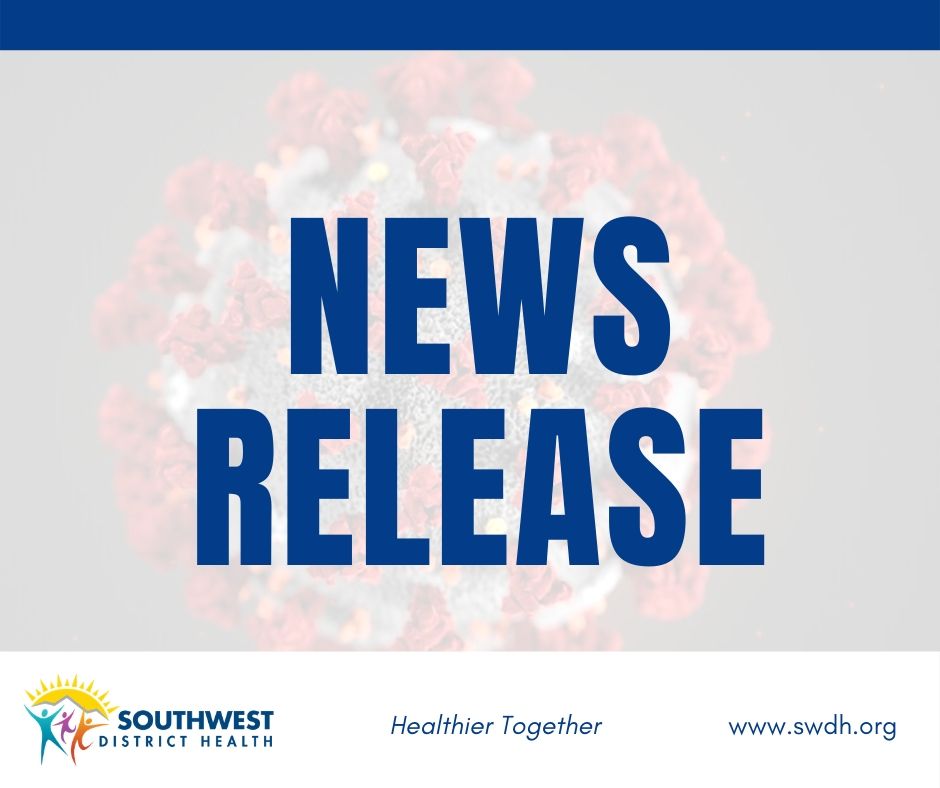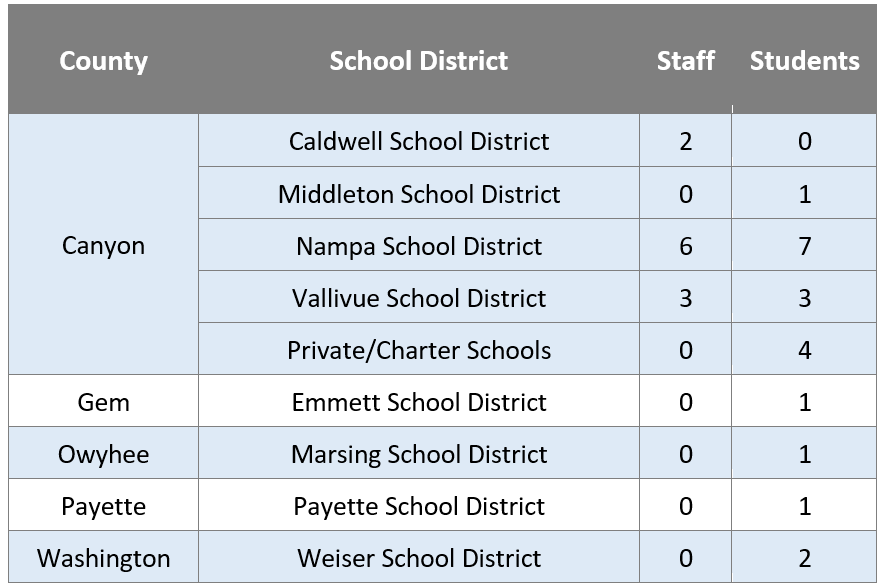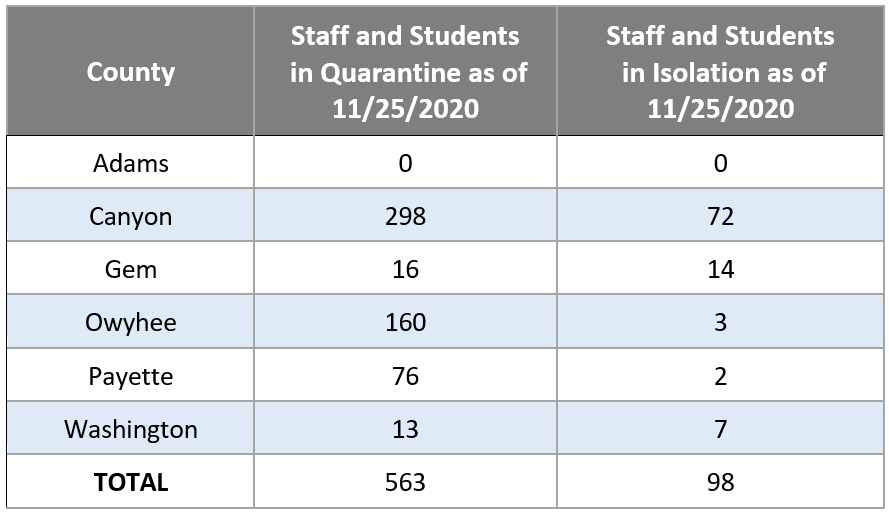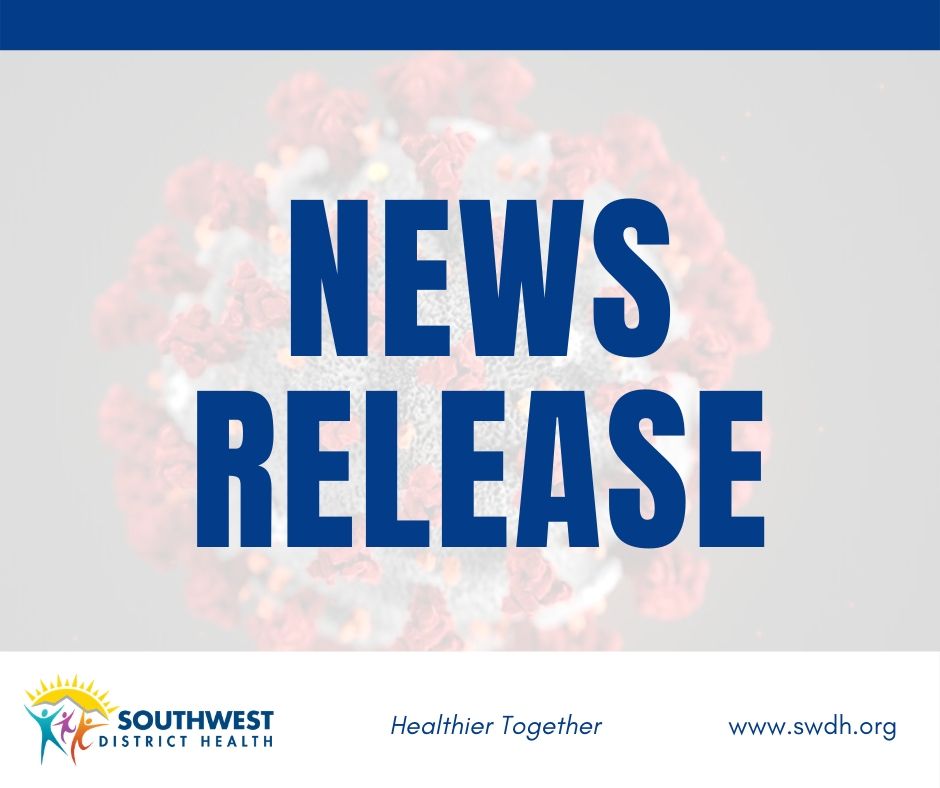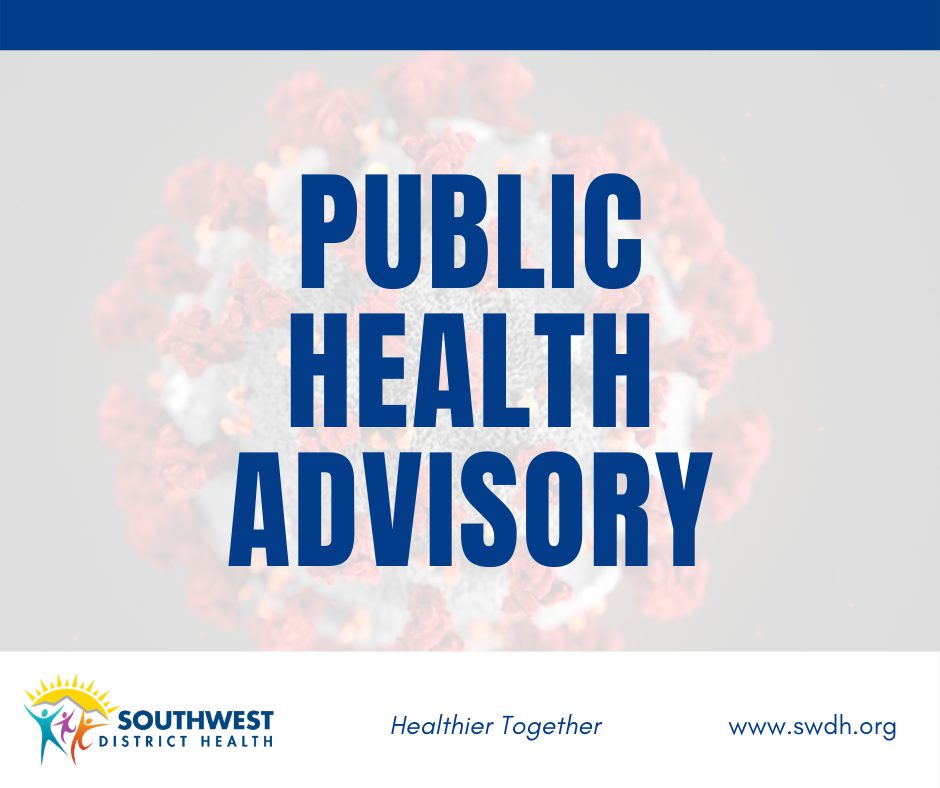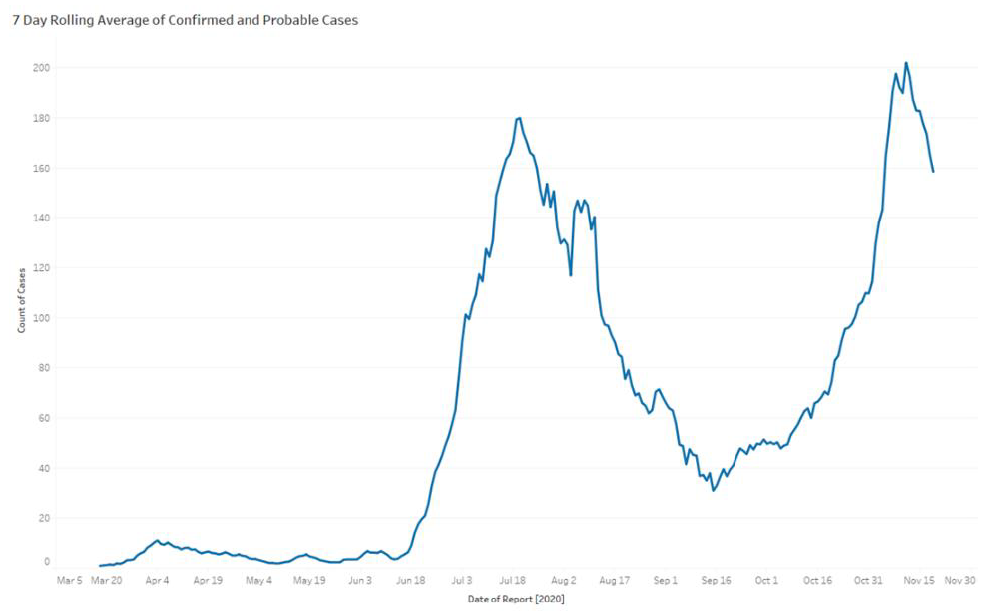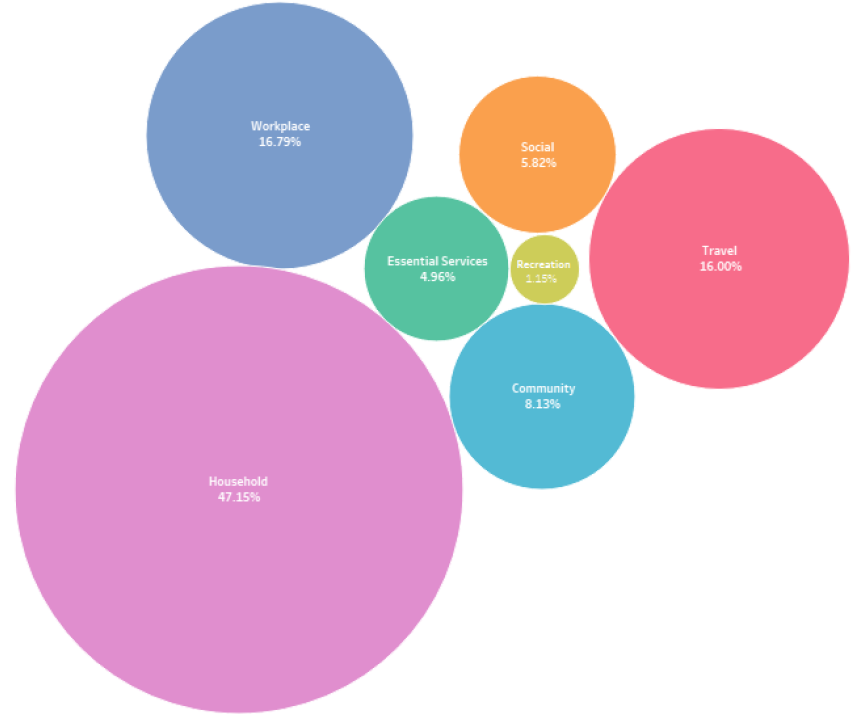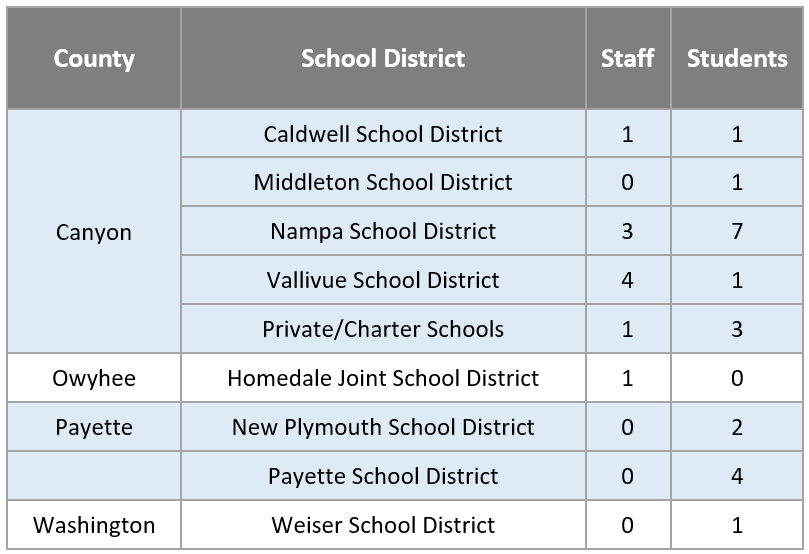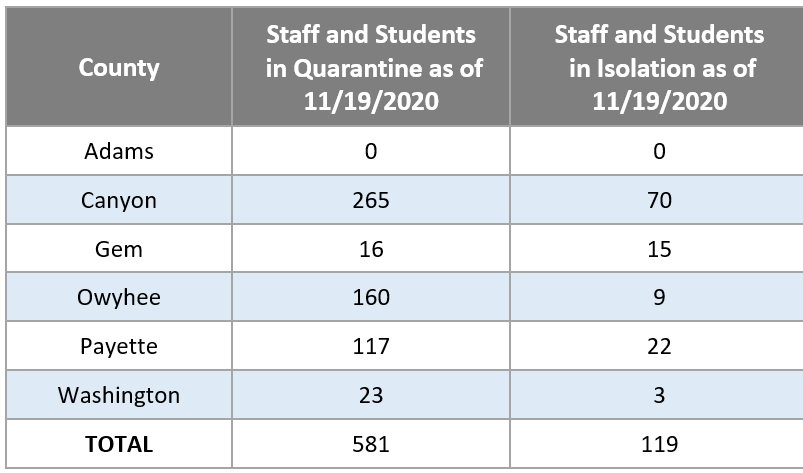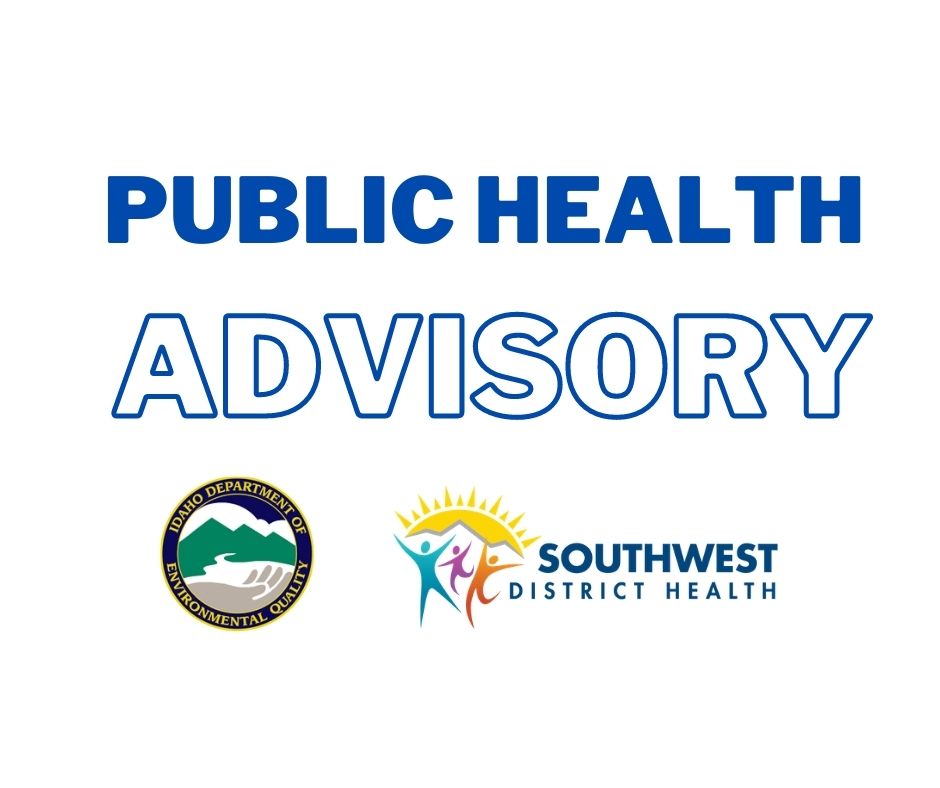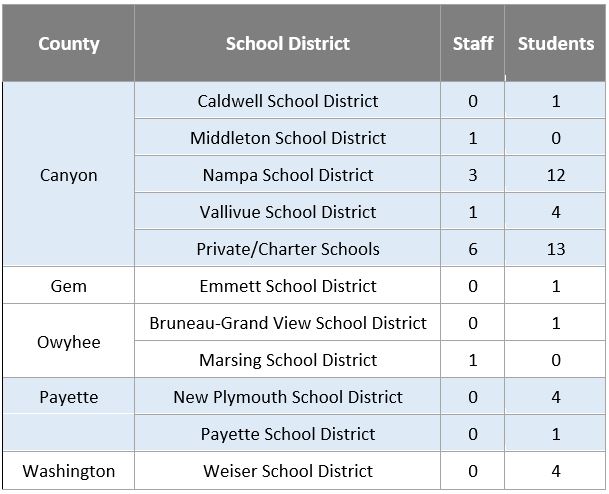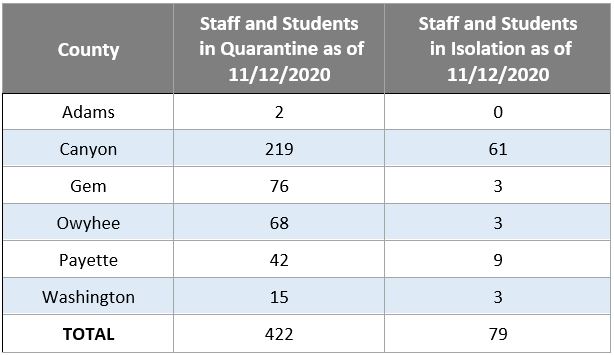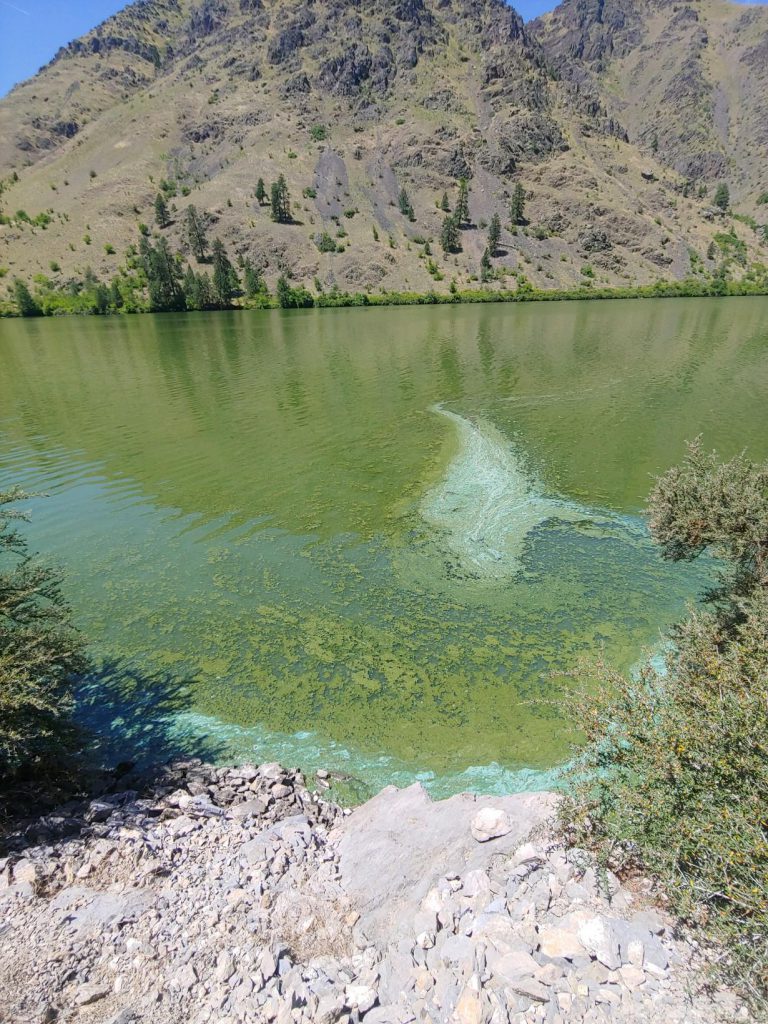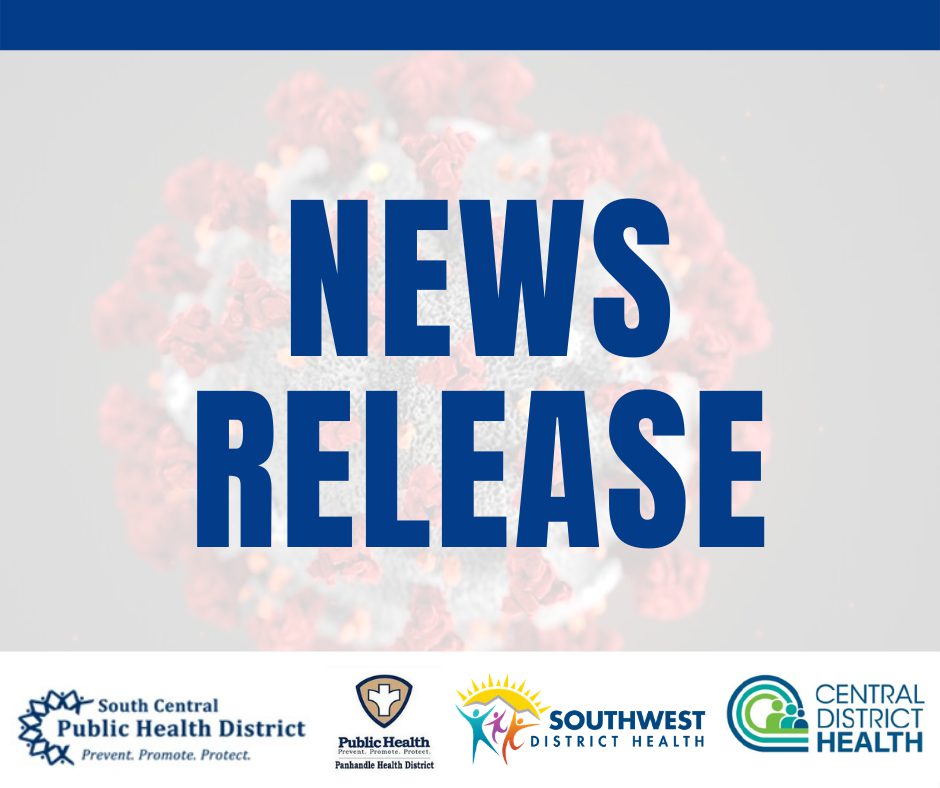FOR IMMEDIATE RELEASE
Southwest District Health Board of Health meeting format to change
CALDWELL, IDAHO – The format of the Southwest District Health Board of Health meetings will be changed to limit the gathering size to ten people or less in order to comply with the Stage 2 Stay Healthy Order issued by Governor Brad Little on November 14, 2020. The next Board of Health meeting is scheduled for Tuesday, December 15th, 2020, at 10:00 a.m. at the SWDH Canyon Room, 13307 Miami Lane, Caldwell, 83607.
Board of Health members may attend either in-person or remotely. In addition to limiting the gathering size to ten people or less, no in-person public comments will be accepted. “To ensure safety and integrity of the meeting space, an in-person public comment period will not be provided,” said Bryan Elliott, SWDH Board of Health Chairman.
These changes to the meeting format order were not made for the meeting held on November 17, 2020, due to the short time frame between the date of the order and the date of the regularly scheduled meeting.
The meeting format is detailed below:
Maximum attendance: In-person attendance at the meeting will be limited to 10 people, including the Board of Health members and SWDH staff. Face coverings that cover the nose and mouth will be required when physical distancing is not maintained.
In-Person Public Comment: No in-person public comments will be accepted.
Written Comment submission: Comments in response to an agenda item for a specific meeting date may be submitted and must be received 24-hours in advance of the applicable meeting to allow for routing and board member review. All messages will be shared with the Board and included in the public record. Comments in response to an agenda item for a specific meeting may be made two ways:
- Via Survey Monkey link available on the agenda
- Mailed to: SWDH Board of Health, Attn: Administration Office, 13307 Miami Lane, Caldwell, ID, 83607
View Meetings:
- Online: SWDH offers the opportunity to view the meeting through live streaming available on the SWDH YouTube page. Meeting videos are also posted on the SWDH YouTube page for viewing following the meeting.
- In- Person Viewing: In-person attendance at the meeting will be limited to 10 people, including Board of Health members and SWDH staff. Face coverings that cover the nose and mouth will be required when physical distancing is not maintained.
- Anyone unable to attend the meeting in-person is invited to view the meeting on their own device through live streaming available on the SWDH YouTube page.
Important information about the meeting room at SWDH:
- Physical distancing of at least 6-feet is required in the SWDH Board of Health meeting room.
- When physical distancing cannot be maintained, a face covering that covers the nose and mouth is required to be worn inside of the SWDH Board of Health meeting room. A face covering must fit close to your face without large side-gaps that cover the nose and mouth. Acceptable face coverings include cloth masks made of tightly woven fabrics, such as cotton and cotton blends and medical and non-medical disposable masks.
- No in-person public comments will be accepted during the meeting.
Southwest District Health Board of Health meetings are held in accordance with open meeting law as specified in Idaho Statute. The regular Board of Health meeting schedule can be located online at https://swdh.id.gov and is posted in the foyer of the Caldwell facility. Regular meeting agendas are posted to the website and foyer 48 hours in advance of the meeting date. Notices of special board meetings and agendas can be found at https://swdh.id.gov and are also posted to the foyer of the Caldwell facility and are made available at least 24 hours in advance as required by statute.
The Idaho Open Meeting Law does not require the opportunity for public testimony or public comments at these open meetings unless a public comment opportunity is included as an agenda item on the agenda. However, public comments may be solicited in advance of the meeting.
Meetings held via telephone or video conference are in compliance with Idaho Open Meeting Law. The law permits a meeting to be held by telephone or video conference and requires at least one member of the governing body or the director or chief administrative officer to be physically present at the meeting location designated in the meeting notice. These communications via telephone or video conference among members must be audible to all persons attending the meeting. Providing an electronic link for members of the public to listen to the meeting is an acceptable means to allow those members of the public who cannot physically attend to listen to the meeting
# # #
Media Contacts:
Ashley Anderson Ashley.Anderson@phd3.idaho.gov
Katrina Williams Katrina.Williams@phd3.idaho.gov
